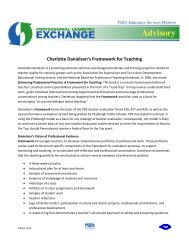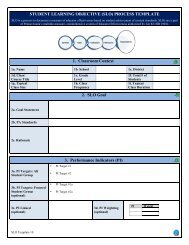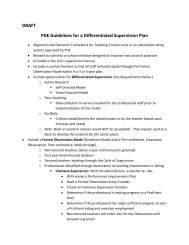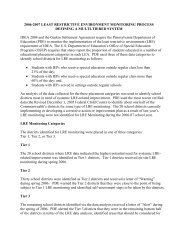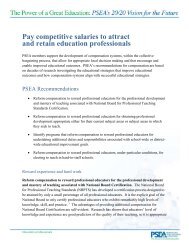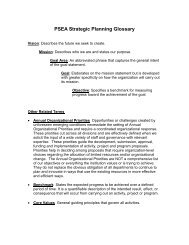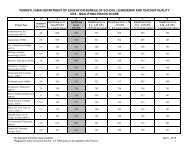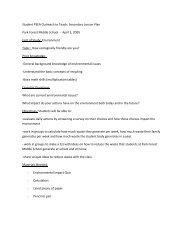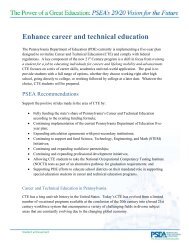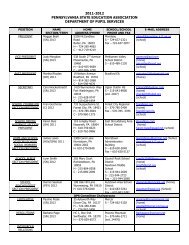Attributes of STEM Education The Student The Academy The ...
Attributes of STEM Education The Student The Academy The ...
Attributes of STEM Education The Student The Academy The ...
Create successful ePaper yourself
Turn your PDF publications into a flip-book with our unique Google optimized e-Paper software.
TIES <strong>STEM</strong> <strong>Education</strong> Monograph Series: <strong>Attributes</strong> <strong>of</strong> <strong>STEM</strong> <strong>Education</strong><br />
<strong>The</strong> <strong>Student</strong><br />
<strong>The</strong> hallmark <strong>of</strong> being a youngster is play, “…the experience <strong>of</strong> play is<br />
grounded in the concept <strong>of</strong> possibility.” (Thorne, 1998) If the cognitive<br />
learning theorists are right, then play is the pre-cursor to problem solving.<br />
Questioning is central to play. Thus, children asking questions <strong>of</strong> the adult<br />
world is vital to their development. Children are handed verbal cues that<br />
keep them safe, “don’t touch the stove.” Yet, their world is full <strong>of</strong> stimulation<br />
that spurs them to questions, not just acceptance <strong>of</strong> commands. <strong>The</strong>y<br />
“tinker” with notions as much as play dough and legos. “Why” is vital to their<br />
understanding. Slowly, over their early childhood they become more and<br />
more sophisticated problem-solvers, robust knowledge and understandings<br />
are socially constructed through talk, activity and interaction around<br />
meaningful problems and tools.” (Vygotsky, 1978) <strong>The</strong>ir need to understand<br />
the world and address their whys creates pathways for them to begin to make<br />
sense <strong>of</strong> the world, “Humans are viewed as goal-directed agents who actively<br />
seek information.”(How People Learn, Pg. 10) Thus, as an entering<br />
elementary student, they have solved many problems for themselves using a<br />
design model.<br />
A K-12 <strong>STEM</strong> educated youngster would continue their education in<br />
consonance with this view <strong>of</strong> the world. <strong>The</strong>y would be invited to continue to<br />
understand process and apply their understanding to novel situations.<br />
Knowledge, facts and vocabulary would support their drive to understand<br />
and make sense <strong>of</strong> things.<br />
Suggested <strong>Attributes</strong> <strong>of</strong> the <strong>STEM</strong> educated student:<br />
• Problem-solvers—able to frame problems as puzzles and then able to<br />
apply understanding and learning to these novel situations (argument<br />
and evidence)<br />
• Innovators—“power to pursue independent and original investigation”<br />
(Gilman, 1898) using the design process<br />
• Inventors—recognize the needs <strong>of</strong> the world and creatively design and<br />
implement solutions<br />
• Self-reliant—able to set own agendas, develop and gain self-confidence<br />
and work within time specified time frames<br />
• Logical thinkers—using the logic <strong>of</strong>fered by calculus and found in 60%<br />
<strong>of</strong> all pr<strong>of</strong>essions world-wide; able to make the kinds <strong>of</strong> connections to<br />
affect an understanding <strong>of</strong> natural phenomena<br />
2



